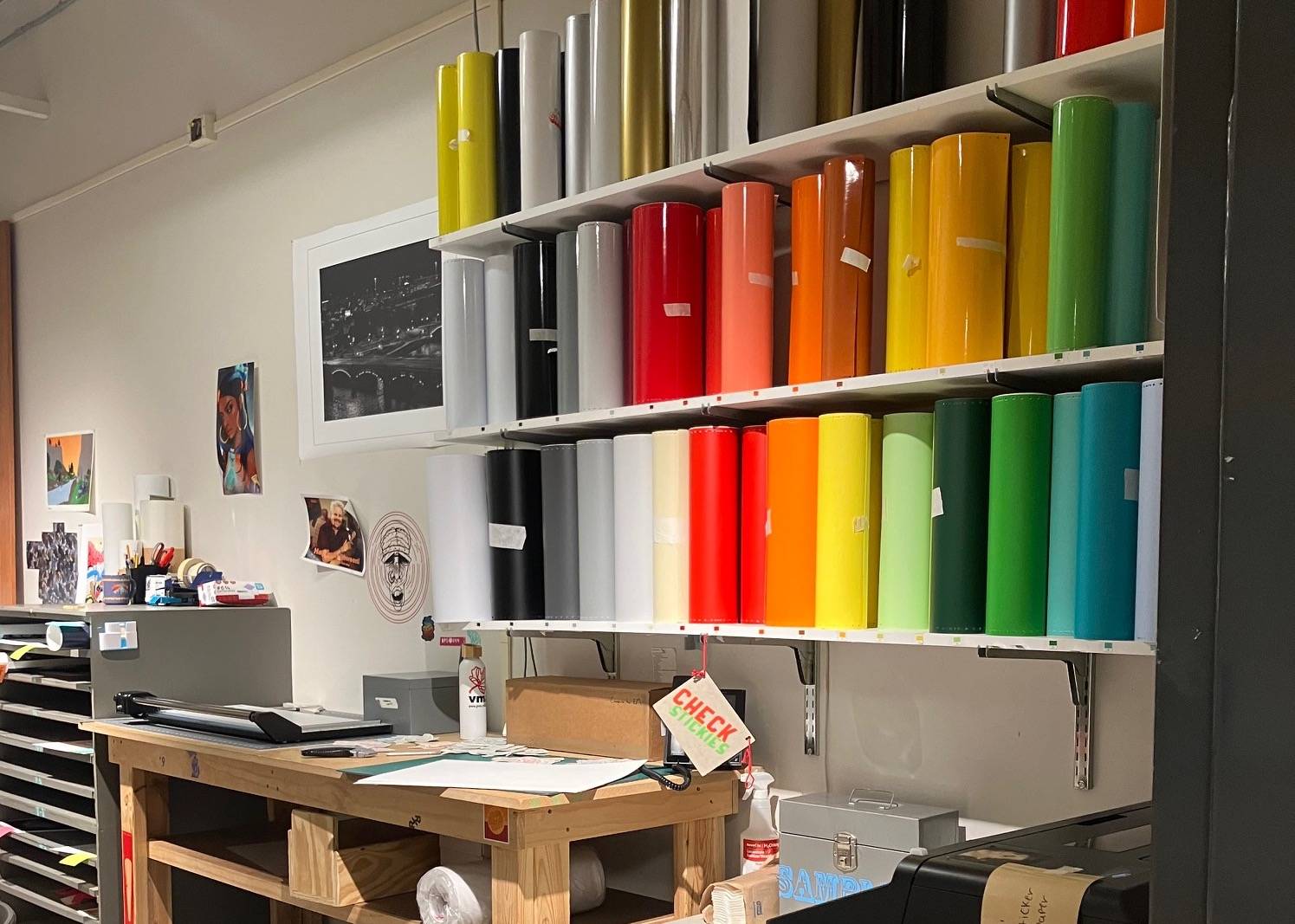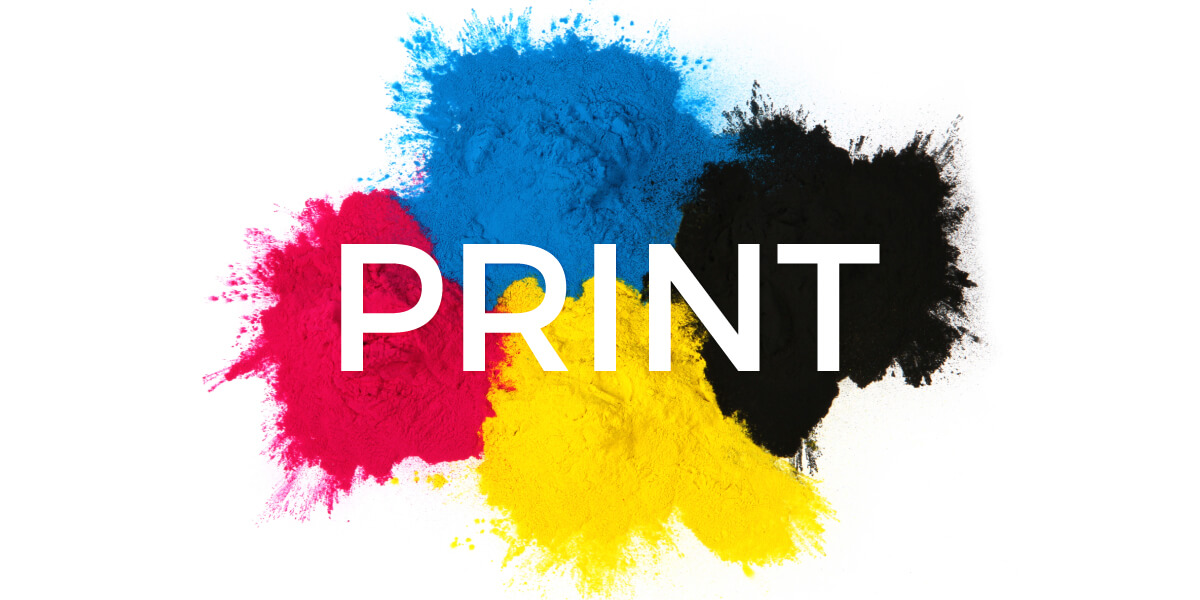Custom Framing Options to Ask About at a Print Shop Near Me
Custom Framing Options to Ask About at a Print Shop Near Me
Blog Article
The Ultimate Guide to Making Use Of Printing Solutions for Personalized Art Prints
Steering via the world of customized art prints requires a clear understanding of numerous printing solutions. Artists need to take into consideration variables such as printing techniques and products to accomplish the preferred end result. Each choice, from art work preparation to color calibration, plays a vital role in the last item. As they discover these aspects, artists can disclose the possibility for their work to get in touch with audiences in a purposeful way. What steps can they require to assure their prints stick out?
Understanding Different Sorts Of Printing Services
Although lots of people might ignore the details of printing solutions, recognizing the different kinds readily available is crucial for anybody aiming to produce custom-made art prints. The most common types consist of digital printing, counter printing, and display printing. Digital printing is favored for its fast turn-around and capability to produce premium pictures directly from digital documents, making it optimal for small runs. On the other hand, balanced out printing offers premium image top quality and is economical for larger amounts, using plates to move ink onto paper. Screen printing, usually used for fabrics and promotional products, involves pressing ink through a mesh display, permitting lively colors and textures. Each method has its one-of-a-kind benefits and limitations, making it crucial for musicians and designers to examine their certain demands, such as amount, desired quality, and budget plan, before selecting a printing service that straightens with their creative vision.
Selecting the Right Products for Your Prints
Picking the ideal materials is important for achieving premium personalized art prints. Recognizing the numerous types of paper and the importance of ink top quality can considerably influence the final outcome. Artists must think about these aspects to ensure their vision is accurately represented in the printed piece.
Paper Kind Explained
Selecting the right paper kind is necessary for achieving the desired visual and toughness in customized art prints. Numerous alternatives exist, each offering distinct features. For example, shiny paper improves shade vibrancy and information, making it excellent for digital photography prints. On the other hand, matte paper gives a softer surface, which is more effective for artwork that requires nuance and appearance. Art paper, commonly made from cotton or alpha cellulose, supplies archival top quality and is ideal for reproducing elaborate information in paintings (Print Shop Near Me). Additionally, specialized papers, such as watercolor or canvas, can add one-of-a-kind aesthetic results. Ultimately, selecting the proper paper type will greatly affect the final presentation, guaranteeing that the artwork is both durable and aesthetically appealing
Ink High Quality Issues
Ink quality plays a necessary duty in the total success of custom-made art prints. Top quality inks guarantee lively colors, sharp details, and long life, which are vital for showcasing imaginative work. When selecting printing solutions, artists should think about pigment-based inks over dye-based options, as they provide far better fade resistance and color stability. Furthermore, the choice of ink need to enhance the selected paper type, boosting the print's aesthetic impact. Environmental variables, such as humidity and temperature level, can also affect ink efficiency; for that reason, musicians must inquire concerning ink formulas that withstand these components. Inevitably, spending in exceptional ink quality can boost the last item, assuring that the art print holds to the artist's vision for several years to come.
Discovering Printing Methods: Digital vs. Standard
While both digital and standard printing strategies have their one-of-a-kind advantages, the choice on which technique to use often depends upon the specific demands of the artwork. Digital printing masters flexibility and rate, allowing for fast turnaround times and the capability to print as needed. This technique is specifically useful for artists who require one-of-a-kind pieces or tiny runs, as it removes the need for comprehensive setup processes.Conversely, typical printing strategies, such as lithography and screen printing, typically produce richer structures and shades, attracting artists seeking a more tactile and authentic finish. These methods can improve the depth and quality of the artwork, making them suitable for larger versions. In addition, typical approaches may use an unique visual that digital printing occasionally battles to replicate. Ultimately, the option between these techniques need to consider elements like wanted high quality, quantity, and imaginative intent, guiding artists to one of the most suitable option for their jobs.

Preparing Your Artwork for Printing
Efficiently preparing artwork for printing requires mindful attention to detail, despite the selected printing strategy. Artists need to assure that their data are produced at the ideal resolution, generally 300 DPI, to maintain sharpness and quality. The appropriate color setting, usually CMYK for print, is important to achieve the preferred color accuracy. Artists ought to additionally consider the measurements of the artwork, seeing to it to include bleed learn this here now areas if required, to prevent any kind of unwanted white sides after trimming.Additionally, documents formats play an important function; TIFF and PDF are usually preferred for top quality prints. Prior to entry, it is essential to review the artwork for any type of imperfections or unwanted aspects. By diligently checking these elements, artists can enhance the probability of their prints straightening with their imaginative vision, eventually causing an effective printing end result.
The Importance of Color Calibration and Proofing
Color calibration and proofing are essential actions in the printing procedure, as they ensure that the last result accurately mirrors the artist's vision. Correct color calibration assurances that the colors presented on the screen match those that will be published. This process includes changing the display settings, printer accounts, and inks to attain a constant color representation.Additionally, proofing enables musicians to preview their work prior to the final print run. This phase allows them to spot and correct any kind of discrepancies in information, saturation, or color, thereby minimizing costly errors. By utilizing hard-copy or electronic proofs, musicians can make informed decisions concerning modifications needed for optimal results.Incorporating shade calibration and proofing into the printing workflow not just enhances the top quality of the end product but likewise fosters a reputable partnership between the musician and the printing solution, assuring fulfillment and fidelity to the initial art work.
Selecting the Perfect Size and Style for Your Prints

Advertising and marketing and Marketing Your Custom Art Prints
Advertising and marketing and marketing customized art prints requires a strong brand identification to stand out in an open market. Effective on the internet promo strategies and the calculated use social networks systems can considerably enhance presence and engagement. By incorporating these components, artists can produce a compelling presence that draws in possible buyers.
Building Your Brand Name Identity
Establishing a solid brand name identity is important for artists seeking to effectively market and offer their custom-made art prints. This identity includes the artist's distinct style, worths, and tale, which reverberate with prospective buyers. Artists ought to produce a cohesive aesthetic visibility throughout all systems, including logos, color design, find out here and typography that reflect their artistic vision. Furthermore, a clear goal statement assists interact the musician's objective and interest. Engaging storytelling regarding the motivation behind each piece can promote emotional links with the target market. Uniformity in messaging, whether on social media or packaging, enhances recognition and count on. By meticulously curating their brand identity, musicians can differentiate themselves in an affordable market, drawing in dedicated customers that appreciate their creativity.
Effective Online Promo Approaches
What strategies can musicians utilize to efficiently advertise their personalized art prints online? Initially, creating an expert web site showcasing the art work is necessary. This website needs to include top quality images and detailed summaries to involve potential buyers. In addition, artists can utilize email advertising by building a customer list to share updates, promotions, and brand-new launches. Working together with blog owners and influencers in the art neighborhood can expand reach and reliability. Using limited-time discounts or unique pieces can additionally produce necessity, encouraging acquisitions. Moreover, optimizing material for search engines through relevant search phrases will boost presence. Keeping a blog regarding the creative process can draw in art enthusiasts, promoting a much deeper link with the target market and boosting the overall advertising method.
Making Use Of Social Media Site Platforms
Social network systems work as effective tools for artists looking to market and market their custom-made art prints. By leveraging platforms like Instagram, Facebook, and Pinterest, artists can display their job to a large audience. Involving visuals and calculated hashtags can raise presence, attracting possible customers to their accounts. Frequently posting content, such as behind the curtain procedures or brand-new layouts, helps maintain audience rate of interest and cultivates a sense of area. Additionally, musicians can use targeted advertising to get to certain demographics, enhancing the opportunities of sales. Cooperations with influencers or other artists can better enhance direct exposure. Ultimately, a well-curated social media presence not just promotes personalized art prints yet likewise constructs a loyal customer base in time.
Often Asked Concerns

Just how Do I Find Trustworthy Printing Expert?
To discover reliable printing provider, one should research online testimonials, look for suggestions from peers, contrast profiles, demand samples, and examine customer solution responsiveness. This complete approach warranties educated choices and adequate outcomes.
What Is the Normal Turn-around Time for Custom Prints?
The common turnaround time for custom prints varies by supplier, yet typically varies from a couple of days to 2 weeks. Aspects affecting this consist of order size, complexity, and the details printing methods used.
Can I Get a Reimbursement if I'm Not Pleased With My Prints?
The question More hints of getting a refund for poor prints typically depends upon the particular printing solution's plans. Several firms offer complete satisfaction warranties, while others might have rigorous return conditions, emphasizing the value of assessing terms in advance.
Exist Any Type Of Hidden Prices Connected With Printing Services?
Lots of printing services might consist of surprise prices such as setup fees, delivery costs, or service charges for details products. It's vital for consumers to make inquiries about all prospective expenses prior to settling their order.
How Can I Ensure My Prints Are Environmentally Pleasant?
To guarantee prints are eco-friendly, one ought to select environmentally friendly inks, recycled paper, and sustainable printing practices. Researching printing solutions that focus on sustainability and acquiring qualifications can better ensure minimal environmental effect in the printing procedure. Steering through the globe of personalized art prints requires a clear understanding of various printing solutions. Several people may forget the intricacies of printing solutions, understanding the different kinds offered is important for anyone looking to develop customized art prints. The most typical types include electronic printing, balance out printing, and screen printing. Efficiently preparing artwork for printing calls for mindful attention to information, regardless of the chosen printing method. Prints aimed at galleries may require basic dimensions to help with framework, whereas special formats may appeal to collectors looking for something distinctive.Lastly, the printing solution's abilities should be assessed.
Report this page